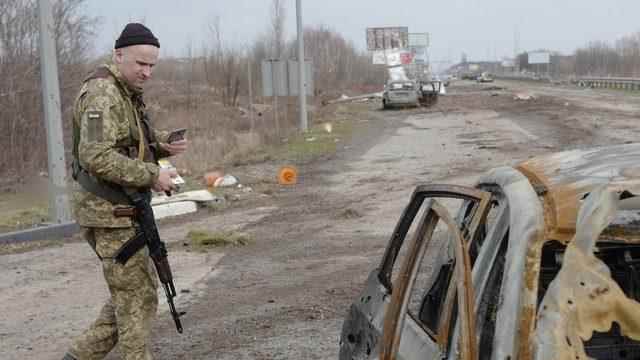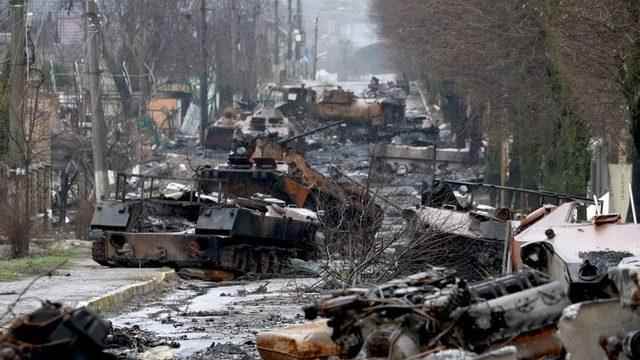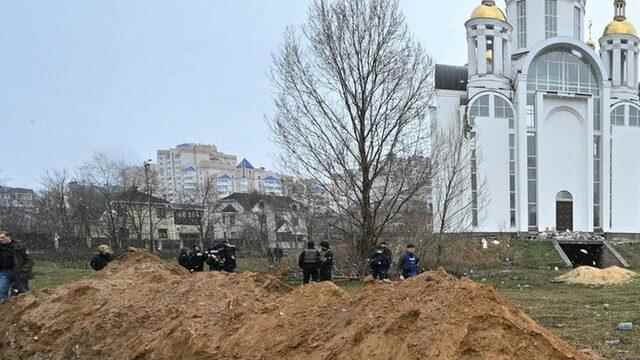Ukraine has launched an investigation into suspected war crimes in Bucha after it was abandoned by the Russian military. In the city north of Kiev, the bodies of many civilians were found lying on the streets, some with their hands tied behind their backs.
On Sunday, Ukraine’s Prosecutor General Irina Venicetova said they had found the bodies of 410 civilians killed so far in areas retaken from Russian forces around Kyiv. However, she added that this is not the final number and that the process of searching and identifying the bodies will take a long time.
Venicetova said on Monday that the number of victims of violence in other until recently occupied cities could be even higher, and she expects bad news from Borodyanka, northwest of Kiev.
Human rights organizations have recorded numerous cases of murder, rape and other serious crimes in territory reclaimed from Russian forces.
Russia claims that the photos and videos from Bucha are fake and mise-en-scene. However, experts disproved all the arguments Russia put forward in support of this.
On April 4, the New York Times published satellite images taken between March 9 and 21, during the days when Russian troops controlled the city, as Moscow admitted. These images match the corpse-like silhouettes found in the same places in early April.
What happened in Buça?
A few days after the start of the occupation in Ukraine, a convoy of Russian tanks and armored vehicles that arrived in Bucha was attacked by the Ukrainians and was unable to advance. Later, Russian troops entered this suburb of the Ukrainian capital and remained there at least until the end of March.
Although many civilians left the area, some remained. Since natural gas, electricity and water were cut off, they were cooking in the courtyards of the apartments by making fires.
Eyewitnesses say that Russian soldiers did not allow them to leave the city through the humanitarian corridors, and those who tried to escape were shot at.
Journalists and officials who arrived in the city after the withdrawal of Russian forces found the bodies of at least 20 men in the streets. Many had extensive wounds on their bodies, some of which were evident from the scar on their temples, where they had been shot at very close range. Several corpses could clearly be seen being crushed by tanks.
https://www.youtube.com/watch?v=m2NYoH_FYSA
On Monday, BBC reporter Yogita Limaye saw the bodies of five more men in plain clothes in the basement of a house in Buça. They had bullet wounds on their bodies and their hands were tied behind their backs.
Satellite images taken by Maxar on March 31 also show a 14-metre mass grave near St Andrew’s Church in Buça.
Residents of the city said that in the early days of the war, the Russians “shot anyone they saw” and killed many people, who were also buried in this mass grave. The number of those buried varies between 150 and 300.
How is Russia responding to the accusations?
Kremlin spokesman Dmitri Peskov said Russia denied allegations that the Russian army had a hand in the killing of civilians in Bucha.
According to Peskov, the Kremlin does not trust “fake videos” of people killed in Bucha.
Russian Foreign Minister Sergey Lavrov also claimed that the images in Bucha were fake.
The Ministry of Defense also stated that there was no massacre in Buça.
In a statement released by the Russian state news agency RIA, the statement said, “All photo and video materials released by the Kyiv regime that allegedly prove that Russian military personnel committed some kind of ‘crime’ in the city of Bucha in the Kyiv region are another provocation.” It was claimed that not a single city dweller was subjected to violence.
How true are the stories?

The Russian side says that the evidence of the alleged massacre in Bucha emerged only four days after the Russian forces left the city.
On Sunday, April 3, Russia announced that its army had completely left Bucha on March 30. However, on April 1, the TV channel of the Russian Ministry of Defense reported that “Russian sailors wiped out resistance in settlements around Hostomel, Bucha and Ozera”, referring to a Navy commander, Alexei Shabulin.
On the evening of April 1, the Mayor of Bucha, Anatoli Fedoruk, announced that the city had been liberated (he said it was the day before, on March 31). BBC reporters were able to enter the city on April 1.
Therefore, independent sources cannot confirm that the Russian army left Bucha on 30 March.
In addition, the Russian military claims that the first video footage of corpses on the streets of Bucha appeared “only on the fourth day” of the soldiers’ departure, that is, on April 3.

However, the first images of corpses on the streets of the city appeared on April 1. Journalists recorded a large number of human bodies on the roads, especially when foreign media came to the city with the Ukrainian army and police.
BBC reporters personally saw the bodies of about 20 civilians in and around Buça on April 1, when they first visited the city.
On April 4, the New York Times published commercially available satellite imagery from Maxar.
According to the newspaper, the photos taken on March 9, 11, 19, 20 and 21 were compared with videos posted on social networks that were taken on the same street on April 2, after the city was recaptured. Satellite photos taken during the deployment of Russian troops in early and mid-March matched the corpse-like silhouettes found in the same locations in early April.
The Russian side has not yet commented on these pictures. But Russia’s Permanent Representative to the United Nations, Vasily Nebenzya, promised to hold a press conference to reveal the evidence confirming the Russian version of events.
